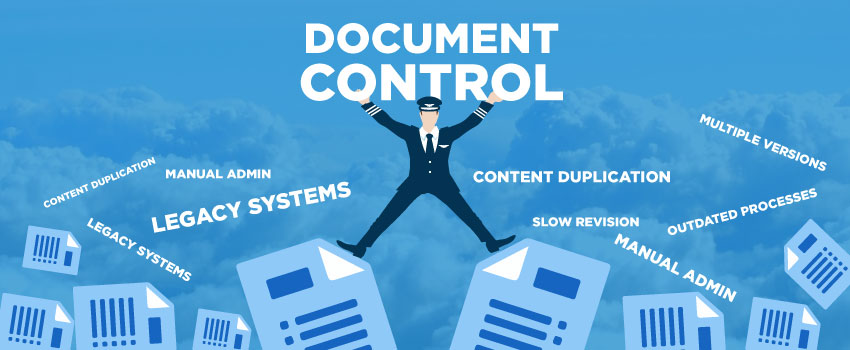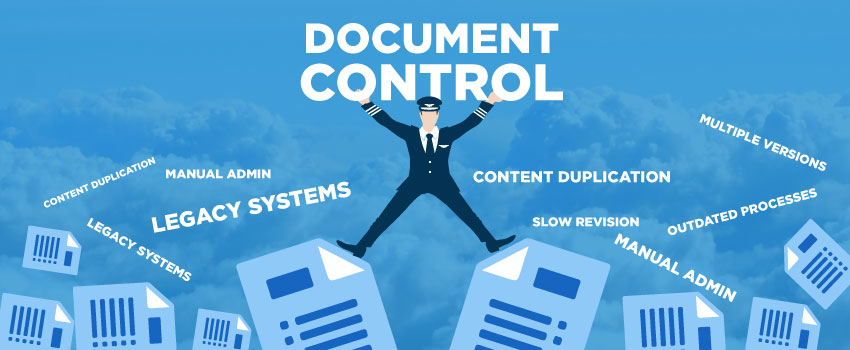
Airline document management is a cumbersome process, but it’s not without its challenges. For instance, having a lack of process can mean managing mission-critical documents and manuals can start to go amiss and can be hard to gain back control.
In this article, we take a look at some of the ways that good document management software can do to help you take back control and keep the cogs turning smoothly. Read on to learn more.
Document revisions take too long
Airline manuals consist of hundreds of pages of complicated data and information, so it’s no wonder why it can take a dedicated publishing team some time to get through making all the amendments. However, if there’s a peak in the number of manuals requiring updates, you might not have all the resource to get through them all in time.
However, a good document management system can provide you with an easier means of completing manual revisions and there are even dedicated vendors that can provide additional help in the form of XML experts who become an extension of your in-house team and ensure you complete all revisions in time.
Limitations of legacy systems and outdated processes
One of the biggest barriers to reducing the loss of control is that of outdated processes and using legacy systems. In such situations there are a number of scenarios that can converge to decrease the efficiency of a document management system. Two primary situations occur most regularly:
- The specialist publisher who has a particular bias towards certain publishing software and not only knows all of the nuances of its design but also has created routes to bypass the problems such software causes. The main issue surrounding this situation is of course one of knowledge and collaboration. Hobbyist publishers can cause all sorts of problems unless consistency is forced upon them.
- Secondly, legacy systems often rely upon software, that quickly becomes out-of-date and is unable to cope with the complexity and volume of activity that is required. Updates take time, retraining is often required…and as a result, deadlines become much more difficult to meet.
A final point to make here is that an outdated approach to document management has invariably been supported by software that is no longer flexible enough to be upgraded into a new and more efficient document management process.
Too much manual admin required
Your publishing team have only so much time on their hands to be handling manual updates, so if there’s too much admin required, it will likely slow the whole document management process down. This then affects the publishing and distribution of all the manuals if it cannot be done in time - thus having a ripple effect across the organisation and one that could ground an aircraft.
Document management software should allow you to automate previously manual tasks, for the sole purpose of saving you time and speeding up manual revision processes.
Duplication of content / multiple manual versions
Probably the biggest area where control can be lost is when human error comes into play. Without the right processes in place, and certainly no central network, documents can go missing, can be duplicated and/or can have multiple (and outdated) versions flying out into the ether.
The problem with this, of course, is the detrimental effect it could pose to the rest of the organisation - especially from a security and safety aspect. If, for instance, a pilot was given an outdated manual version to fly with - this could have serious consequences later down the line - especially if the most up-to-date version included a vital change regarding operating the aircraft.
Look for document management software that provides you with one central cloud-native network. This way, all your mission-critical data can sit in the same place and be carefully monitored. You’ll also have the benefit of ensuring no one can duplicate any content and you will always have the latest approved version available.
Conclusion
Using the right software that is designed especially for your airline’s document management needs is just as vital as choosing the right aircraft or the right avionics. Everything must work seamlessly together in a world that is becoming more and more connected as departments begin aligning themselves more. It is an enterprise-wide choice and therefore critical to airline operations.
Being able to have full control of your document management is therefore critical as you will be able to ensure your department is only publishing and distributing the highest quality output that will benefit all areas of the organisation including flight operations, subject matter experts, pilots and even accountable managers.
If you’re looking for new document management software that better meets your requirements, download our free Aviation Document Management Selection Guide and learn what you should be considering when choosing new software for your airline.

